
Voyager to Mars Rover: NASA's 10 Greatest Innovations
NASA's Top Innovations
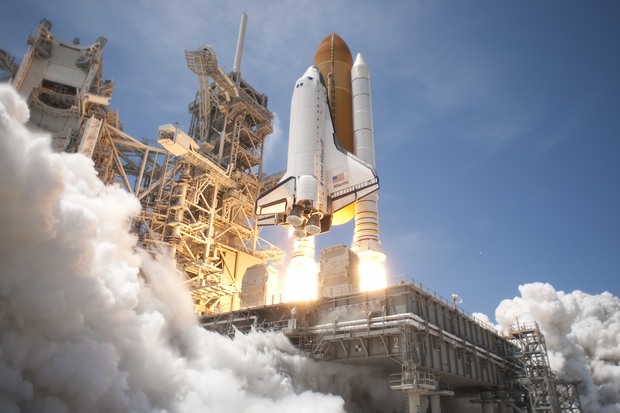
Rod Pyle is a space author and documentary producer. He led leadership training at NASA's Johnson Space Center for its top executives and has written extensively about space exploration and organizational principles. Pyle's latest book is "Innovation the NASA Way: Harnessing the Power of Your Organization for Breakthrough Success" (McGraw-Hill, 2014). He contributed this article to Space.com's Expert Voices: Op-Ed & Insights.
NASA has been synonymous with innovation since the agency’s founding in 1958. Program after program has demonstrated this, but perhaps no period was as fiercely inventive as the space race years, from 1961 to 1972. As the seventies progressed, already diminishing budgets took a toll, and the layoffs that began both within NASA and at the aerospace contractors in the late 1960s accelerated. The agency's budget declined from a high point of almost 5 percent of the national budget in 1966 to roughly 1 percent during the 1970s, 1980s and 1990s, to the current 0.5 percent — the lowest percentage ever. [How Innovation Will Get U.S. to Mars 2020 (Op-Ed)]
Nonetheless, NASA has continued to lead the way among national space agencies and space exploration with a continuous stream of new and innovative programs and technologies. While the space shuttle had an entirely different mandate than Apollo — i.e. to make access to space (theoretically) cheaper and more efficient — the program was really about innovation being backed into ever-tighter budgets. ['Innovation the NASA Way' (US 2014): Book Excerpt]
The International Space Station has been a case of innovation within a global context, involving numerous primary and secondary partnerships with countries across the globe.
And then there is the Jet Propulsion Laboratory (JPL), marching to a different beat, exploring robotically. Always at the narrow end of the funding pipeline, JPL has consistently exceed both the world's expectations and their own, with spectacular deep-space voyages of exploration that continue for decades after the conclusion of their primary missions.
Here then are ten of NASA's prime innovations, some of their "finest hours."
Voyager
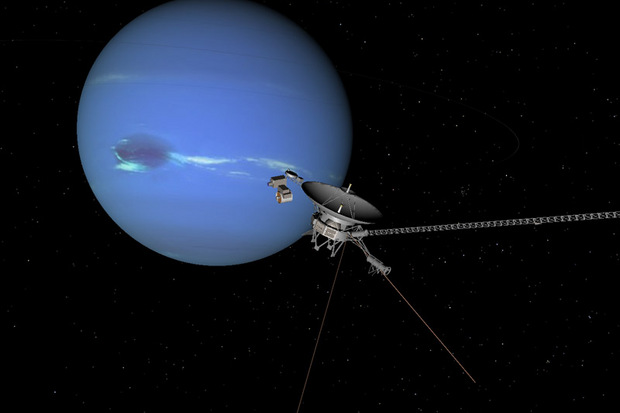
Not content to merely explore Mars and Venus, in the 1960s, NASA hatched a scheme to explore most of the solar system. The major planets — Jupiter, Saturn, Uranus and Neptune — were going into a rough, curving alignment in the 1970s, and NASA wanted to conduct a "Grand Tour" with twin spacecraft. The opportunity to do so would not repeat for about 180 years.
The plan was thwarted by budgetary concerns, but NASA persisted, and had the Jet Propulsion Laboratory (JPL) build two smaller and less ambitious spacecraft called Voyager. The robotic explorers were launched in 1977, racing past Jupiter and Saturn and completing their primary missions by 1980. With a clever twist in trajectory design and a lot of brainpower, JPL managed to divert Voyager 1 to investigate Saturn's largest moon, [ Titan , and then leave the solar system. Voyager 2 continued onward and visited Neptune and Uranus (and is still the only machine to have done so) before heading outward.
Both probes are still transmitting data almost 38 years later, thanks to innovative mechanical and electronic designs, a nuclear fuel source, and the first autonomous computers to fly into space. Voyager 1 officially left the solar system last year, headed for a rendezvous with another star in about 50,000 years.
NEXT: The Apollo Moonsuit
The Apollo Moonsuit
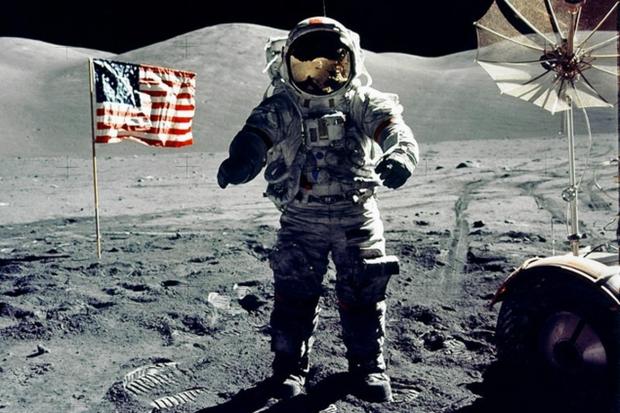
What good was flying to the moon if you couldn't walk on it? That was the conundrum facing NASA engineers in the early 1960s. They had designed space suits for the X-15 flights, Mercury and then Gemini, and each suit was a little bit better than its predecessors — but all were stiff, bulky and uncomfortable.
And perhaps worst of all, it was hard to actually do much of anything when the suits were pressurized — they were like wearing stiff, thick balloons. For the Apollo lunar missions NASA innovated quickly, building and testing a dozen designs before settling on the bulky-looking suit used for the Apollo 11 landing.
That spacesuit, designed specifically for working on the lunar surface, is more nimble than it appears. There are rotating joints on the gloves and other parts of the suit, the fingertips are made of rubber thin enough to "feel," and the shoulders were supported by a clever cable-and-pulley arrangement. And while nobody would call them "comfy," the astronauts were able to use them, protected from the killing temperatures and hard vacuum of the moon, for up to eight hours at a time.
NEXT: The Viking Mars Lander
The Viking Mars Lander
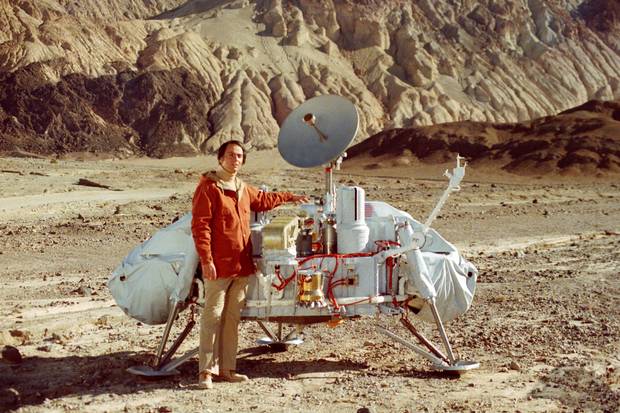
In the late 1950s, NASA's Jet Propulsion Laboratory dreamed up an ambitious mission to send twin robotic landers to Mars. Once there, the machines would conduct geological tests, weather and atmospheric sensing, and perhaps most ambitious of all, a search for life. At the time the mission was being designed, NASA had not even flown past Mars — the planet was merely a red smudge in large telescopes.
But within a decade, NASA engineers were exercising incredible innovation, and had miniaturized life-science labs that should have filled a classroom down to the size of a small washing machine. Two Viking spacecraft, each with an orbiting component as well as a lander, arrived at Mars in 1976.
The twin landers set down on opposite sides of the red planet, and both performed well beyond their primary missions of 90 days (the Viking 1 lander operated until 1982). While the search for microbial life was ambitious (many would say audacious), the results were puzzling and inconclusive.
But in 2008, NASA scientists reevaluated the experiments and ascertained that there may have been microbes, or at least organic substances, present in the Martian soil after all. A new Mars rover mission slated for 2020 may edge us closer to knowing, one way or the other.
NEXT: The F-1 Rocket Engine
The F-1 Rocket Engine
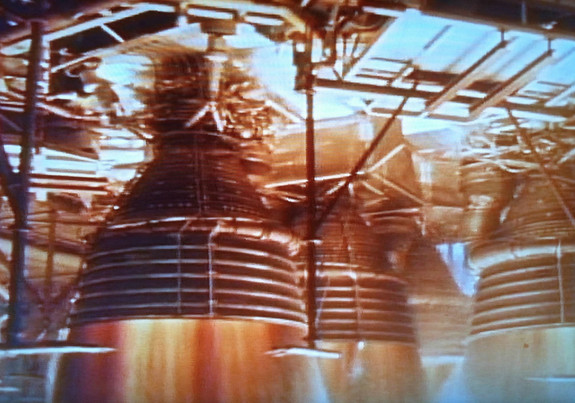
In the late 1950s, and America was suffering "rocket-envy." The Russians always had something bigger and better than the U.S. rockets (their Intercontinental Ballistic Missile (ICBM) nuclear missiles made ours look like tiny). So the U.S. Air Force commissioned a company in California named Rocketdyneto build the largest, most powerful rocket engine ever seen.
It was called the F-1, and would ultimately power the Apollo moon flights. Everything about the F-1 was bold and new … and big. The final design yielded 1.5 million pounds of thrust.
Rocketdyne originally built on previous knowledge, but simply scaling-up smaller engines resulted in terrific explosions when tested. One major issue was that the engines were shaking themselves to death due to acoustic vibrations. Rocketdyne's innovation? Deliberately set off small bombs inside the rocket engine while it was firing, making it vibrate in a controlled fashion, until the engineers understood the problem. That's bold (some might say crazy) thinking. The F-1 was the most successful rocket engine of its time.
NEXT: The Space Shuttle
The Space Shuttle
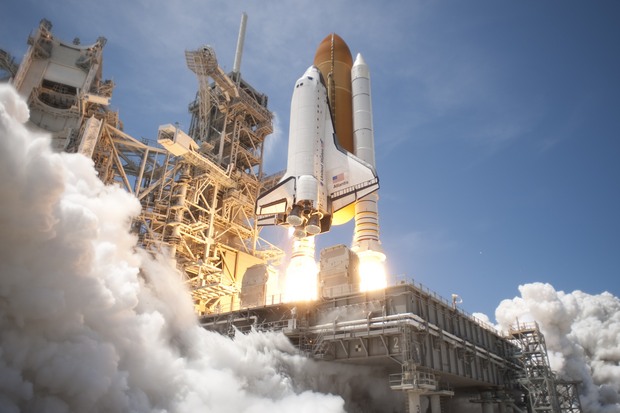
How do you follow-up an amazing space program that landed a man on the moon? With a semi-reusable space plane, of course.
The space shuttle would undergo many redesigns, from a fully-reusable, twin space-plane with a piloted, reusable first stage, to its final incarnation with strap-on boosters and an expendable orange fuel tank. But from its vast cargo capability to its incredible heat-shedding tiles and the ability to fly over 30 times each, America's five shuttle orbiters — Challenger, Columbia, Discovery, Atlantis and Endeavour were amazing machines.
Despite two fatal in-flight accidents, the fleet flew a combined 134 times, and were a study in backing successful innovation into a highly constrained budget.
NEXT: The Apollot Guidance Computer
The Apollo Guidance Computer
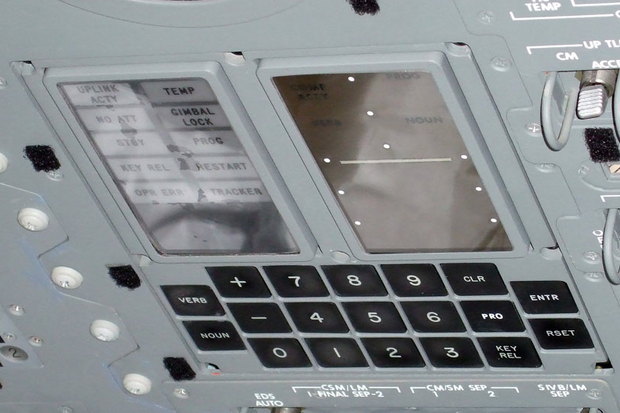
How do you fly to the moon with 1960s technology? Just aim and fire the rockets? Nope. You need a sophisticated navigation computer, and in 1963, when NASA got serious about going to the moon, such devices filled entire rooms.
But the agency was undaunted, and forged a collaboration with the Massachusetts Institute of Technology (MIT)'s Instrumentation Laboratory to design the Apollo guidance computer. The result was the first integrated-circuit digital flight computer ever made. The Apollo astronauts used the computers to fly from the Earth to the moon and back nine times, with six successful landings.
The computer could navigate from the Earth to the moon, from lunar orbit to the surface, then back to lunar rendezvous and a return to Earth … all on 2 kilobytes of RAM and 36 kilobytes of programming running at one megahertz. It was far less intelligent than a modern washing machine, but so very much more capable, and was the underpinning of today's compact digital computers.
NEXT: Mars Rover Curiosity
Mars Rover Curiosity
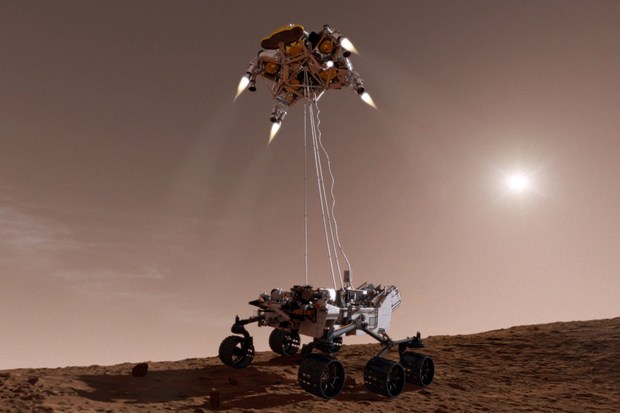
"Touchdown — we're safe on Mars!" When flight director Al Chen spoke those five words, a decade-long saga ended with the successful landing of NASA's Mars rover Curiosity.
The $2.5 billion program was the most ambitious yet, with exponentially more instrumentation and capability than all that had gone before. But all this techno-wonder came at a price — the complex rover weighed a ton and was the size of a Mini Cooper. Landing it safely was a huge challenge.
The methods used in previous missions would not be sufficient for this heavy machine. So the engineers hit upon a new, wacky, crazy idea: Slow the craft almost to a hover using parachutes and rockets, then lower the rover using nylon ropes. They called it "sky crane," and the design raised eyebrows —and bloodpressures — upon first glance. "We first had to pass the laugh test…" recalls chief engineer Robert Manning of JPL.
But on August 5, 2012, the only people laughing were the overjoyed engineers, controllers and scientists in JPL's mission control — Curiosity had made it to Mars, and their adventure was just beginning.
NEXT: The Lunar Module
The Lunar Module
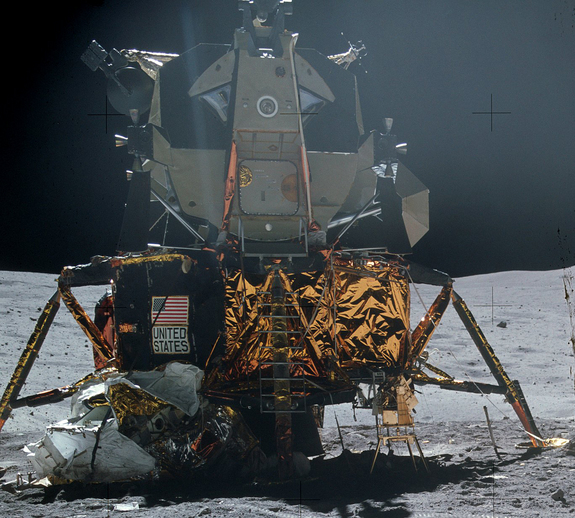
Lighter, lighter, lighter. That was the mantra of the Grumman Corporation as they struggled to make NASA's Apollo Lunar Module flight worthy. Long a maker of tough fighter aircraft, the company was now tasked with building a small number of true spaceships — machines meant to fly only in space. No streamlining, no aerodynamics.
The engineers struggled to transform the concept into metal. The final result was a vast departure from early designs: They had stripped out most of the windows, the seats, even the side panels of the lower stage. Everything not absolutely essential to landing on the moon was gone.
But the machine was still too heavy to fly, so Grumman took to extreme and groundbreaking methods — even chemically etching tiny machined parts until they were barely strong enough to work — in the battle to trim grams. In the end, ten Lunar Modules flew (including the Apollo 13 LM, which saved the crew when their oxygen tank exploded), and every last one of them did their job to perfection.
NEXT: The International Space Station
The International Space Station
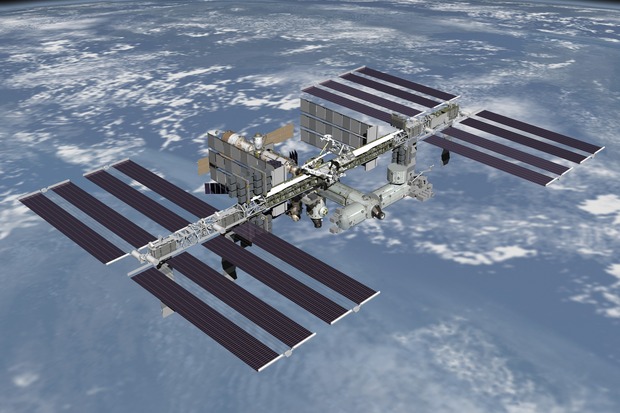
The International Space Station (ISS) is the largest and most expensive machine to ever leave Earth — and represents the most complex, successful, and at times, strained international collaboration ever undertaken. The final construction combines designs originally intended to fly in separate national space programs — including the United States, Russia, Japan and Europe.
The ISS is larger than a football field, and expensive, at $150 billion. It is also the longest continually occupied structure in space, with crews serving in rotation for nearly fourteen years. As the station ages, new and inventive solutions are needed to fix ailing parts (such as the recent repair of a faulty air conditioning unit). But the ISS has proven to be robust, and is scheduled to remain in orbit until at least 2024.
NEXT: The Apollo Moon Rocket
The Apollo Moon Rocket
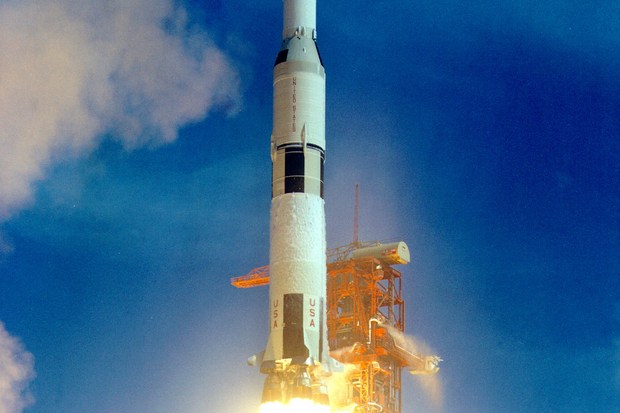
Standing at number one on the list is the mighty Saturn V moon rocket. The three-stage monster was the size of a WWII destroyer, and even more massive at well over 6,000,000 pounds.
The rocket's first stage utilized five F-1 rocket engines producing a combined total of 7.5 million pounds of thrust — 160 million horsepower. Had the rocket failed on the launch pad, it would have had the explosive force of a small atom bomb. It was a highly evolved version of smaller rockets that had flown before, with its roots in Wernher von Braun's V2 rockets that pummeled London and Antwerp in WWII.
The unknowns that faced its creators were immense, and the required innovations in science and technology were titanic. When U.S. President John F. Kennedy announced his intention to land Americans on the moon by the end of the decade in 1961, stunned top NASA brass admitted that they "did not even know what they did not know." Nonetheless, in just eight years, a Saturn V rocket launched the Apollo 11 spacecraft toward a July 20, 1969, landing on the moon. All the crewed Saturn Vs delivered their precious cargo safely, and none failed in flight.
Follow all of the Expert Voices issues and debates — and become part of the discussion — on Facebook, Twitter and Google +. The views expressed are those of the author and do not necessarily reflect the views of the publisher. This version of the article was originally published on Space.com.
Sign up for the Live Science daily newsletter now
Get the world’s most fascinating discoveries delivered straight to your inbox.










